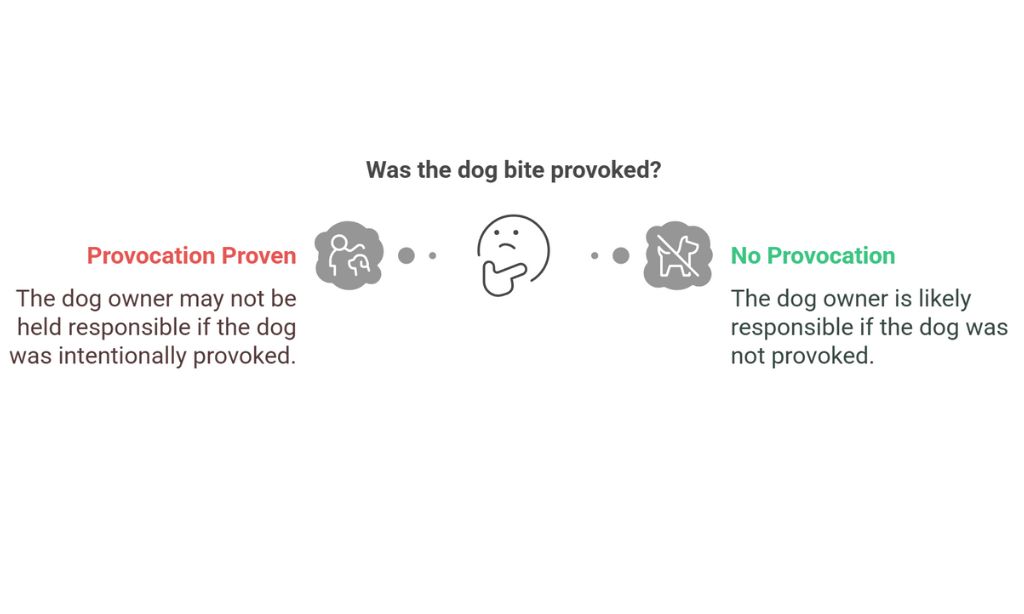Dog bite cases can become legally complex when trespassing is involved. Most victims assume that if they were bitten by a dog while on someone else’s property without permission, they have no legal grounds for compensation. However, that’s not always the case. A qualified dog bite attorney can assess the full circumstances surrounding the incident, including the location, the behavior of the dog, and the history of the property owner, to determine if the injured party still has a valid claim.
Understanding Dog Owner Liability Laws
Dog bite laws vary significantly across states, but most follow either a strict liability rule or a one-bite rule. Under strict liability, a dog owner can be held responsible for injuries caused by their pet regardless of the animal’s past behavior. In contrast, the one-bite rule often requires proof that the owner knew or should have known the dog had aggressive tendencies.
In Minnesota, for example, the law leans toward strict liability. Dog owners are responsible for any unprovoked attack, as long as the victim was acting lawfully at the time. But the interpretation of lawfully is crucial—especially when trespassing is alleged.
Does Trespassing Eliminate Your Legal Rights?
Many people believe that trespassers have no protection under dog bite statutes. While it’s true that the law tends to favor property owners in such cases, the context matters. If the victim was a child or if there were no clear boundaries or warnings about the property, courts may view the situation differently.
For instance, if a homeowner failed to put a “No Trespassing” sign or left a gate open, a court might find them partially at fault for failing to secure their premises. In such cases, the injured person might still have a case, although they may receive reduced compensation under comparative negligence laws.
Children and the Attractive Nuisance Doctrine
When it comes to children, courts often apply the attractive nuisance doctrine, which holds property owners to a higher duty of care. This legal principle recognizes that children are less likely to understand danger and may be drawn to features like a trampoline, pool, or even a dog.
If a child enters a property uninvited and is bitten by a dog, the court may still find the owner liable, especially if the dog was known to be aggressive or poorly restrained. In these cases, consulting a dog bite attorney with experience in child injury claims is essential to determine potential liability and damages.
Provocation as a Legal Defense
One key factor in any dog bite case is whether the dog was provoked. If the dog bite victim—trespasser or not—teased, hit, or otherwise incited the dog, the owner might not be held responsible. However, proving provocation isn’t always straightforward. Courts typically look for intentional and sustained actions that caused the animal to act defensively.
For example, accidental triggering of a dog’s response—such as startling it while walking past a bush—may not be considered provocation under the law. Determining provocation is often a nuanced part of the legal analysis, and it can significantly impact the outcome of a case.
Warning Signs and Fencing Requirements
Dog owners have a duty to take reasonable precautions to prevent foreseeable harm. That includes posting warning signs, using proper fencing, and ensuring their dog cannot escape or attack someone near their property. If a dog jumps over a fence or bites someone just outside a yard, liability may still apply—even if the victim was not supposed to be on the property.
According to a CDC report on dog bites, many attacks happen near the dog’s home, often involving familiar people or neighbors. This suggests that legal responsibility isn’t always as clear-cut as on property vs. off property.
When Insurance Coverage Comes Into Play
Homeowner’s insurance policies often include coverage for dog bites, but the claim’s success depends on the specifics of the incident. If trespassing is involved, the insurance company might attempt to deny the claim. However, many insurers also look at mitigating factors, such as signage, fencing, and the dog’s previous behavior.
An experienced dog bite attorney can help navigate the insurance claims process and ensure your rights are protected. They understand how to counter insurance company tactics and build a compelling argument based on available evidence.
Documenting the Incident Is Crucial
If you or someone you know has been bitten by a dog—trespassing or not—documenting the event is critical. Take photographs of the injuries, the property, any signage (or lack thereof), and get medical treatment immediately. You should also file a report with local animal control authorities to create an official record of the attack.
Even if you’re unsure whether you have a viable legal claim, these steps can make a huge difference if you choose to pursue compensation later. Evidence gathered early often becomes the cornerstone of a successful legal strategy.
Seeking Legal Advice Early On
Given the complexities involved in trespassing-related dog bite claims, seeking legal guidance right away is essential. An experienced dog bite attorney can assess your case from every angle, review local laws, and help determine your best path forward. Whether you were bitten while retrieving a lost pet or cutting through someone’s yard, every detail matters.
According to the American Bar Association, animal law is a rapidly evolving field, and the rights of dog bite victims—especially in edge-case scenarios—are gaining increased legal clarity. Don’t assume you’re out of options without a professional case review.
Conclusion
While trespassing can complicate a dog bite case, it doesn’t automatically mean you have no legal recourse. Each situation depends on a wide range of factors including local laws, the dog’s history, and the actions of both parties involved. Consulting with a knowledgeable dog bite attorney is the best way to understand your rights and build a strong case—even under challenging circumstances.








































